Are you having trouble logging into GP? Are you entering your GP User ID and Password and receiving the below error? – “This login failed. Attempt to log in again or contact your system administrator.”
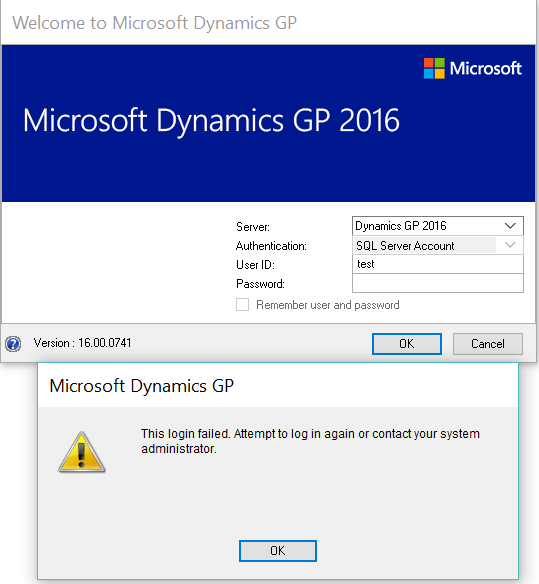
The most common cause of this error is that the user has entered the incorrect User ID or Password. It is important to note that both the Dynamics GP User ID and Password are case sensitive. Unfortunately, the GP system error does not indicate which field has been entered incorrectly. It may be the User ID or the Password or Both.
If the user has entered the incorrect credentials three consecutive times, the error below will be displayed:
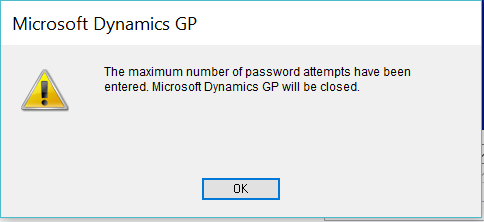
Depending on the period of time specified by your Active Directory policy, you will then have to wait before attempting to log in again. Therefore, it is best to contact your system administrator. The system administrator will be able to reset your password, confirm your User ID, and provide you with a temporary password.
Reset password
Below are the steps for the System Administrator to reset the password:
- Log onto GP as the SA user.
- On the Microsoft Dynamics GP menu, click Tools, point to Setup, point to System, and then click User.
- Select the user who is experiencing the problem and enter a new temporary password in both the Password and Confirm Password (Max15 characters)
- Check the Change Password Next Login
- Click Save
- Have the user log on to see whether the problem still occurs.
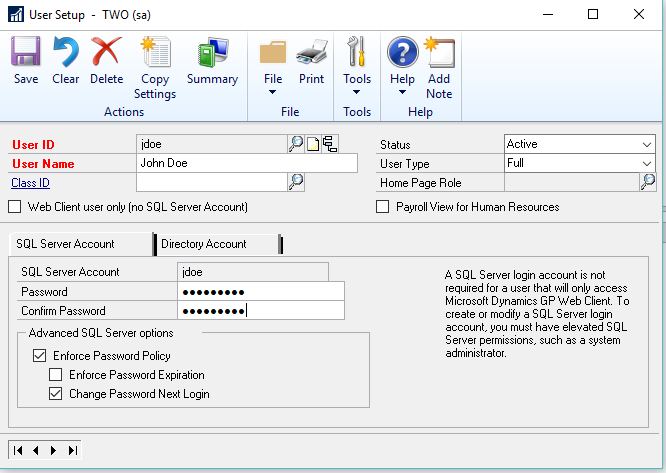
If you continue to receive the error after the GP password reset, the issue may be regarding the Advanced Password Policies within GP.
Advanced Password
Have your administrator follow these resolution steps:
- Log on as the SA user.
- On the Microsoft Dynamics GP menu, click Tools, point to Setup, point to System, and then click User.
- Select the user who is experiencing the problem.
- Click to CLEAR the following checkboxes:
- Enforce Password Policy
- Enforce Password Expiration
- Change Password Next Login
- Click Save
- Have the user log on to see whether the problem still occurs.
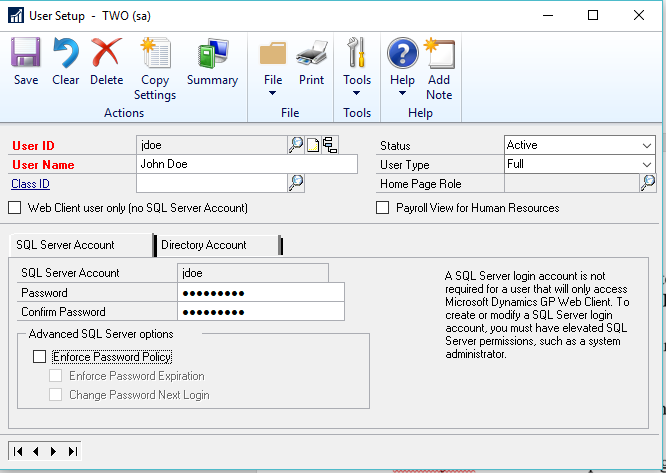
Still didn’t work?
If the issue remains, it may also be necessary for the system administrator to do the following:
On the SQL Server
- Open SQL Server Management Studio.
- Log on as the SA
- Under Object Explorer, Expand Security> Expand Logins.
- Right-click on the appropriate Userid and Select Properties
- Under the General tab, uncheck the Enforce Password Policy.
- Click OK and close SQL Server Management Studio.
- Have the user log try logging in again.
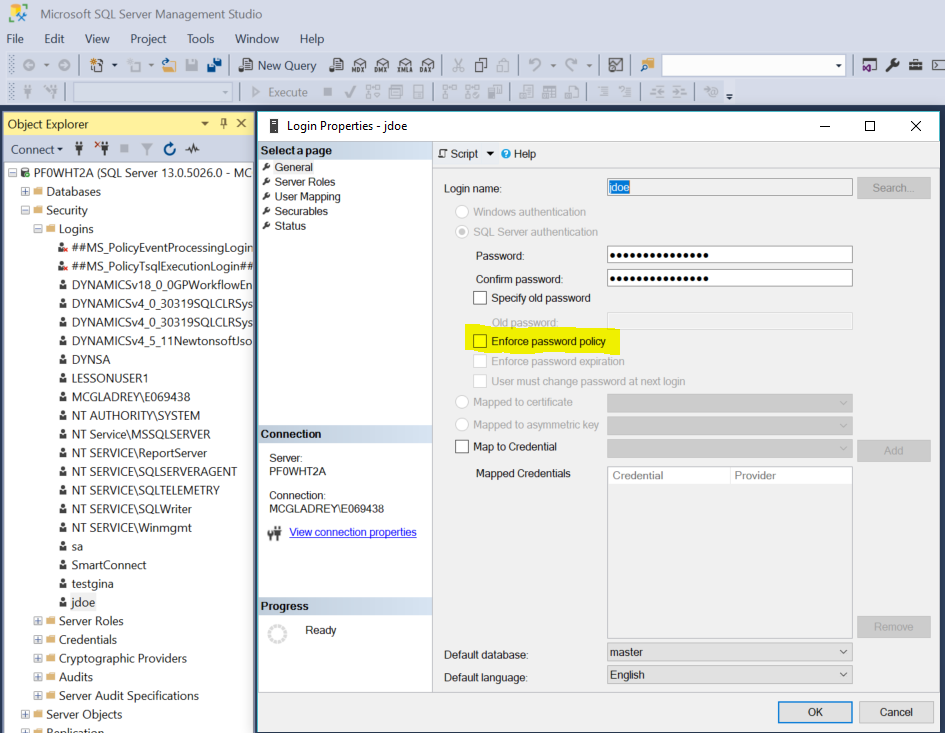
Additionally, you may need to confirm that the user’s SQL login still exists.
- Open SQL Server Management Studio.
- Log on as the SA
- Click New Query, and then paste the following script into the blank query window: SELECT name FROM master.sys.sql_logins
- On the File menu, click Execute.
- In the list of SQL logins, verify that the SQL login that is experiencing the problem exists.
If the user does not exist, return to GP, delete the User ID, and re-create the User ID.
Note: Make sure to go to the User Security Window (Tools > Setup > System > User Security), and make note of the Security Roles assigned to the user prior to deleting and recreating the user id.
Another cause of this error is that the public group does not have Execute permissions to the smDex_Max_Char procedure in the master database. To resolve this issue, take the following steps:
- Open the SQL Server Management Studio.
- Log on using the sa credentials.
- Under Object Explorer, expand Databases, expand System Databases, expand Master, expand Programmability, and then expand Stored Procedures.
- Right-click on dbo.smDex_Max_Char, and then click Properties.
- On the Permissions tab, click the Search button next to Users or roles.
- In the “Select Users or Roles” window, click the Browse button.
- Click to select the Public check box, and then click OK two times.
- On the Permissions tab, verify that Public appears under Users or roles.
- Click to select the Execute/Grant check box, and then click OK.
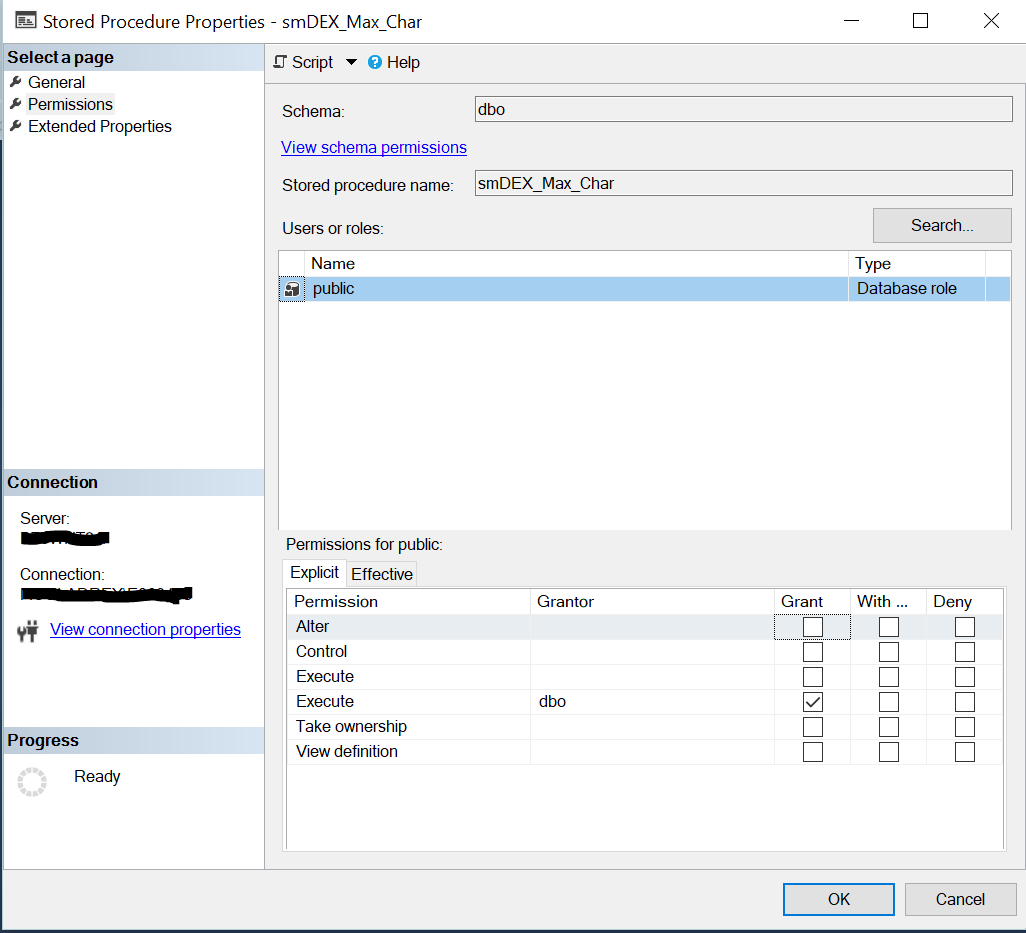
Another cause of the “login failed” error can happen when the password has been changed on one computer, but the user is trying to log into GP from another workstation. The error occurs because the Data Source (ODBC) is different between the computer where the password was changed and the computer that the user is trying to log into GP. To resolve you will need to verify the Data Source. Click Start > Administrative Tools> Data Sources (ODBC). You will then be able to double-click the DSN connection. In the list that appears, you should see one of the following things:
- The name of the computer that is running Microsoft SQL Server
- The TCP/IP address of the computer that is running SQL Server. This address appears in the Servername
If you are unable to determine the name of the computer that is running SQL Server or the TCP/IP address of the computer that is running SQL Server, you should be able to find the information on another working GP client installation.
There could be additional issues causing the error. RSM offers access to Certified Microsoft Professionals, help desk and phone support, knowledge and experience with third-party products and dedicated account management. To learn more about who we are, go to http://rsmus.com/who-we-are.html or contact our professionals at erp@rsmus.com or by phone at 855.437.7202.

 RSMUS.com
RSMUS.com